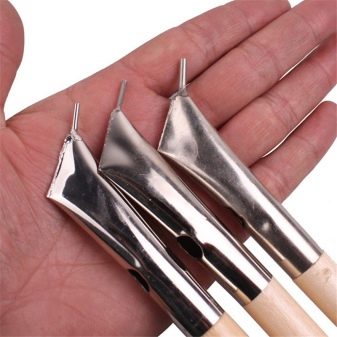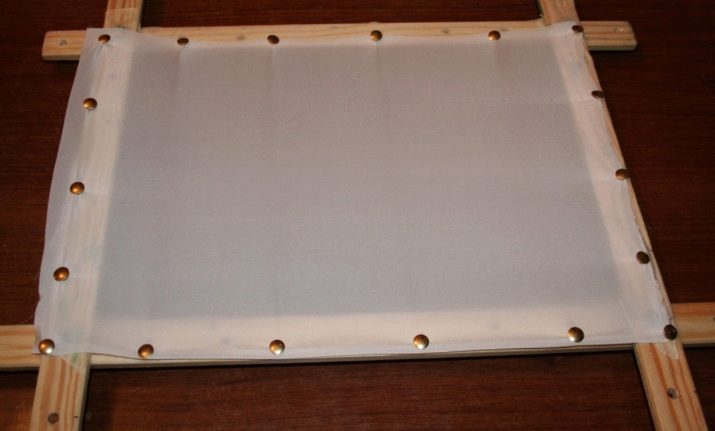In order to turn an old thing into a new one, or to create a spectacular gift with your own hands, it is enough to be able to use the technique of hot batik. Working with wax allows you to easily cover monophonic surfaces with unusual patterns and patterns without special difficulties.

What it is?
Hot batik is a fabric painting technique that has been actively used for a long time. Its essence lies in the fact that the pattern is formed by molten wax or similar material. After dyeing the fabric and removing the wax, a pattern remains on the surface, white or multi-colored.
Hot and cold batik are basically similar, but there are slight differences in the execution technique.
Hot painting is used to shape the contour, as well as protect some fragments from spreading paint.

History of occurrence
People have been painting the fabric for many years, but the first, according to archaeologists, the Indonesians from the island of Java began to do this in the XIII century. Local residents have mastered the technique so well that it has become known around the world. Each clan for centuries acquired its own features of painting. The term itself has been used since the 18th century, and the country of its origin is called the Netherlands. Hot batik appeared long before the cold batik, as the latter only appeared at the beginning of the 20th century.

Tools and materials
Fabric processing is not possible without special tools. First of all, we are talking about a metal mug with a double bottom, which allows you to place a light bulb inside. In this container, wax or other redundant composition will be heated.

To apply it directly to the fabric, various devices will be required: knives, funnels, wheelchairs fixed on wooden handles.


Reservation compounds are prepared according to several recipes.
For example, it can be a mixture of 660 grams of paraffin and 340 grams of technical Vaseline. A combination of 500 grams of paraffin, 250 grams of technical petroleum jelly and the same amount of beeswax is also suitable. Finally, 790 grams of paraffin mixed with 210 grams of petrolatum are considered equally effective.
Paints are better to take special, designed to create a batik. When choosing a material, it is important to monitor whether it is fixed using steam with an iron or plain water. It’s better to prepare brushes of different sizes. The frame will suit both self-made and regular purchase.
To protect it from paint splashes, you can use paper tape. For fixing on the canvas frame, staples, buttons or pins are useful.



Kinds
Hot batik can be either single-layer or multi-layer. In the first case, as the name suggests, wax is applied in one layer. Quite often, such a technique is accompanied by the injection of a different paint into the elements limited by the reserve. Filling is carried out even before the entire plane was covered with background paint, and the resulting parts of the reserve are also protected by the reserve composition.

Two layers or more already imply a multilayer technique. The work is the same except for the final part. In other words, a simple batik is performed at each stage, after which an overlap is created. Repeat the procedure recommended no more than four times.

The varieties of this technique include reverse batik. In principle, it is created in the same way as the traditional one, but the colors are used in the opposite order - from dark to light. Work begins with those places that should be painted in a cold shade, and then the bleaching procedure is carried out.
It is recommended to contain a dye that does not contain chlorine in the composition, and select cotton as a cloth.

Separately, you can distinguish the painting from the stain, which is considered the most complex variety of hot batik. The technique is used in the same way as with multi-layer batik, but instead of continuous consecutive overlaps, spots of different shades are used. In each spot, a part of the ornament is drawn with a reserve composition, after which there is overlapping with a different color. The procedure is repeated only 3 times, and at the final stage a dark shade is activated.

Execution technique
Painting on the fabric, as a rule, is carried out in several stages, and a significant part of them is preparatory. The first step is the development of sketches. Numerous works are presented on the Internet, so usually there are no problems with the choice of drawings. Some simple sketch patterns do not require, in general, for example, if we are talking about "peas" or simple geometric shapes. At the same time, the color scheme is also being thought out.
Since a single-layer hot batik implies a smooth "flow" of flowers, it is necessary to select them so that they harmoniously combine.
For beginners, it is better to choose one key color and work with its shades, both light and dark.


When creating a multi-layer batik, colors are selected in such a way so that their overlapping one on top does not look ugly. Ideally, before starting work, the selected colors are tested on a separate tissue fragment.
The painting itself undergoes a degreasing procedure before painting. It will be enough just to wash the fabric, which will also prevent possible shrinkage. There is an even more complicated method, which involves soaking the web in a soda solution. It is soda that is used, since it is able to wash all chemical solutions that the manufacturer could add at the production stage. The solution is prepared from ordinary soda and clean water, and the tissue in it is soaked for about 30 minutes.

The finished material is fixed on a stretcher, and sometimes it is wetted. The table on which the staining will take place is better to further protect, for example, by tightening with a transparent film. The frame is installed horizontally, and the need for a goat is determined depending on its size.

A sketch is drawn on the fabric using a special disposable pencil or marker. It is important to do this carefully so as not to push the surface. In the case when it is planned to work in warm and light shades, in no case should you use a pen for drawing.
If the sketch is required approximate, then it is allowed to place it under the cloth, and place the wax based on the visible contours. The same applies to a translucent canvas, under which the sketch will easily shine through.

The essence of the use of a reserve substance is that it protects the natural shade of the canvas from paint. First, light colors are used, and then darker. Wax fixes color on the painted areas, and the subsequent one is distributed already in free places.
Wax can be applied with different tools, depending on the emerging pattern. Dry cloth is treated with a brush, foam roll or stamp.
In principle, the use of a pin is allowed - a special tool that runs on electricity and maintains a constant temperature.
Professionals simply pour wax onto the fabric from a convenient container, forming lines, spots, drops and other abstract patterns. Before work, the wax is heated in a water bath or electric stove, as it further must completely soak a cloth piece.

Warming qualities can be determined by the appearance of the wax. If the material is well warmed up, the wax will pass through, and the canvas will darken a little, remaining transparent, if you look at the clearance. When the wax remains white on the surface, it means that it is not warmed up enough. Direct staining is carried out using a brush made of foam rubber, a regular brush or fleece. Work is surely dried out in a quality manner.
Some experts prefer at the last stage to use the crackle effect, which is created using the darkest shade. In this case, the entire canvas is covered with wax, and then deformed by the creation of creases. The resulting cracks are stained with a mixture of soap and dye. As a result, spectacular "antique" cracks form at work.

Deleting a reserve is not particularly difficult. A well-dried work is removed from the stretcher, after which the canvas is actively kneading. As a result, the wax breaks and in the form of crumbs falls from the picture. To remove residual reserve material, paper and iron are required. After lining the fabric, for example, with ordinary newspapers and paper towels, it is necessary to iron it with a hot iron. The procedure will have to be repeated for a while, replacing the paper until all the wax comes out.
In the event that the work was carried out using vapor-fastening coloring substances, then they will additionally need to be fixed with a steamer.

You will learn more about hot batik technique by watching the following video.










